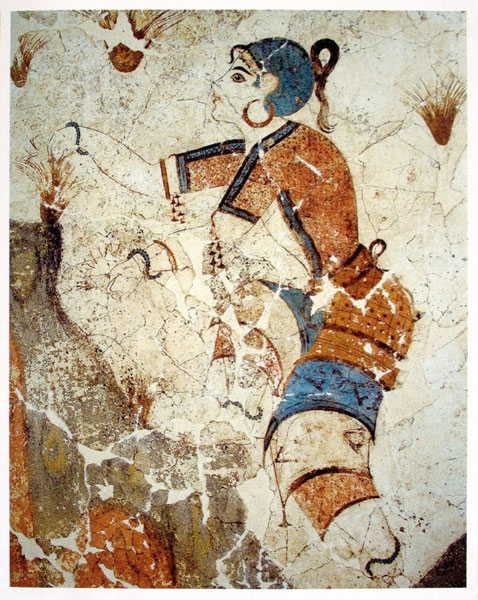Mad about saffron
Updated: 2015-04-30 08:15
By Mike Peters(China Daily)
|
|||||||||||
 |
|
Botanical evidence suggests saffron originated in Greece, where the earliest related species appear in this Minoan fresco of saffron gatherers that dates from 1500 BC.[Photo provided to China Daily] |
In restaurants like Sharzhad in Esfahan or Persepolis in Beijing, Iranian chefs convert their treasured saffron into jewel-like morsels of yellow rice, fragrant teas and glowing golden desserts. In the US, a group of entrepreneurial military veterans have started Rumi Spice, an online shop that supports independent saffron growers in war-torn Afghanistan. In Calgary, Canada, the Silk Road Spice Merchant has similarly embraced the spirit of the ancient traders with a website rich with information and quality spices for sale since 2008.
"Fresh saffron has a distinctive earthy smell and flavor and imparts a bright orange color to food," say co-owners Kelci Hind and Colin Leach on the website, warning that imitations like safflower petals look similar but are far cheaper and almost tasteless. "Saffron is a characteristic ingredient for a number of traditional dishes like bouillabaisse and paella, as well as many risottos. Try adding a few threads to basmati rice with Indian dishes and turn your rice a beautiful golden color.
"When adding saffron to a dish," they advise, "add it to a bit of liquid first to draw out the color, or grind to a powder if no liquid is being used. Adding saffron early in the cooking process gives more color; adding late gives more flavor."
About this series
China Daily is featuring different cuisines from countries along the Silk Road every Thursday.
Related Stories
Meadow Saffron 2010-06-09 15:43
Posh spice judges the International Woolmark Prize 2015-03-19 14:28
Wasabi to bring spice to China concerts 2014-12-11 09:09
Beijing's most lauded Spanish restaurant a weekend treat 2015-01-17 07:10
Easy Talk: Restaurant service 2014-07-29 11:01
Today's Top News
China hits out as Abe visits the US
US Senate rejects bid to toughen Iran nuclear review bill
New Zealand voices dismay at executions in Indonesia
No hiding place overseas for fugitive officials
Nepalis wait for quake help as death toll passes 4,000
Australia recalls ambassador after Indonesia executes drug smuggling pair
61 suspects back home to be tried
PLA's Moscow debut confirmed
Hot Topics
Lunar probe , China growth forecasts, Emission rules get tougher, China seen through 'colored lens', International board,
Editor's Picks

|

|

|

|

|

|






